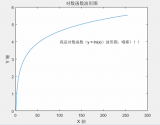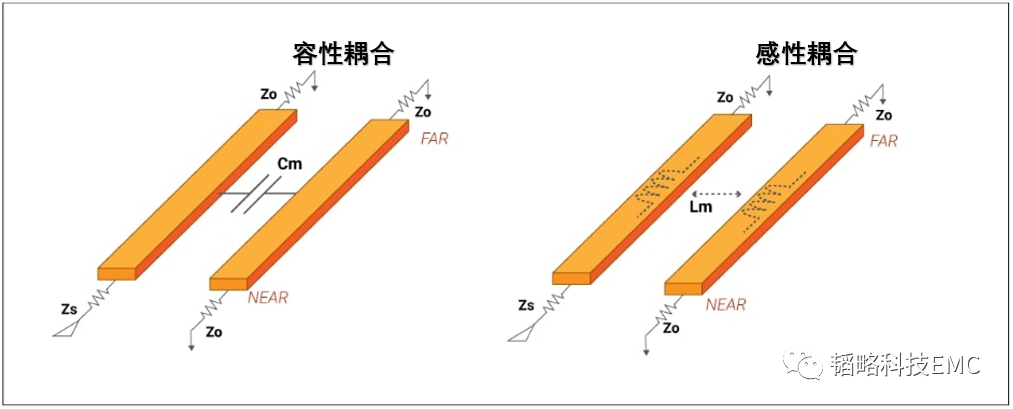DeepMind 最近发布了一篇新的论文---《神经算术逻辑单元(NALU)》(https://arxiv.org/abs/1808.00508),这是一篇很有趣的论文,它解决了深度学习中的一个重要问题,即教导神经网络计算。 令人惊讶的是,尽管神经网络已经能够在许多任务,如肺癌分类中获得卓绝表现,却往往在一些简单任务,像计算数字上苦苦挣扎。
在一个展示网络如何努力从新数据中插入特征的实验中,我们的研究发现,他们能够用 -5 到 5 之间的数字将训练数据分类,准确度近乎完美,但对于训练数据之外的数字,网络几乎无法归纳概括。
论文提供了一个解决方案,分成两个部分。以下我将简单介绍一下 NAC 的工作原理,以及它如何处理加法和减法等操作。之后,我会介绍 NALU,它可以处理更复杂的操作,如乘法和除法。 我提供了可以尝试演示这些代码的代码,您可以阅读上述的论文了解更多详情。

第一神经网络(NAC)
神经累加器(简称 NAC)是其输入的一种线性变换。什么意思呢? 它是一个转换矩阵,是 tanh(W_hat)和 sigmoid(M_hat)的元素乘积。 最后,转换矩阵 W 乘以输入(x)。
Python 中的 NAC
1import tensorflow as tf
2
3# NAC
4W_hat = tf.Variable(tf.truncated_normal(shape, stddev=0.02))
5M_hat = tf.Variable(tf.truncated_normal(shape, stddev=0.02))
6
7W = tf.tanh(W_hat) * tf.sigmoid(M_hat)
8# Forward propogation
9a = tf.matmul(in_dim, W)
NAC
第二神经网络(NALU)
神经算术逻辑单元,或者我们简称之为 NALU,是由两个 NAC 单元组成。 第一个 NAC g 等于 sigmoid(Gx)。 第二个 NAC 在一个等于 exp 的日志空间 m 中运行 (W(log(|x| + epsilon)))
Python 中的 NALU
1import tensorflow as tf
2
3# NALU
4G = tf.Variable(tf.truncated_normal(shape, stddev=0.02))
5
6m = tf.exp(tf.matmul(tf.log(tf.abs(in_dim) + epsilon), W))
7
8g = tf.sigmoid(tf.matmul(in_dim, G))
9
10y = g * a + (1 - g) * m
NALU
通过学习添加来测试 NAC
现在让我们进行测试,首先将 NAC 转换为函数。
1# Neural Accumulator
2def NAC(in_dim, out_dim):
3
4in_features = in_dim.shape[1]
5
6# define W_hat and M_hat
7W_hat = tf.get_variable(name = 'W_hat', initializer=tf.initializers.random_uniform(minval=-2, maxval=2),shape=[in_features, out_dim], trainable=True)
8M_hat = tf.get_variable(name = 'M_hat', initializer=tf.initializers.random_uniform(minval=-2, maxval=2), shape=[in_features, out_dim], trainable=True)
9
10W = tf.nn.tanh(W_hat) * tf.nn.sigmoid(M_hat)
11
12a = tf.matmul(in_dim, W)
13
14return a, W
NAC function in Python
Python 中的 NAC 功能
接下来,让我们创建一些玩具数据,用于训练和测试数据。 NumPy 有一个名为 numpy.arrange 的优秀 API,我们将利用它来创建数据集。
1# Generate a series of input number X1 and X2 for training
2x1 = np.arange(0,10000,5, dtype=np.float32)
3x2 = np.arange(5,10005,5, dtype=np.float32)
4
5
6y_train = x1 + x2
7
8x_train = np.column_stack((x1,x2))
9
10print(x_train.shape)
11print(y_train.shape)
12
13# Generate a series of input number X1 and X2 for testing
14x1 = np.arange(1000,2000,8, dtype=np.float32)
15x2 = np.arange(1000,1500,4, dtype= np.float32)
16
17x_test = np.column_stack((x1,x2))
18y_test = x1 + x2
19
20print()
21print(x_test.shape)
22print(y_test.shape)
添加玩具数据
现在,我们可以定义样板代码来训练模型。 我们首先定义占位符 X 和 Y,用以在运行时提供数据。 接下来我们定义的是 NAC 网络(y_pred,W = NAC(in_dim = X,out_dim = 1))。 对于损失,我们使用 tf.reduce_sum()。 我们将有两个超参数,alpha,即学习率和我们想要训练网络的时期数。在运行训练循环之前,我们需要定义一个优化器,这样我们就可以使用 tf.train.AdamOptimizer() 来减少损失。
1# Define the placeholder to feed the value at run time
2X = tf.placeholder(dtype=tf.float32, shape =[None , 2]) # Number of samples x Number of features (number of inputs to be added)
3Y = tf.placeholder(dtype=tf.float32, shape=[None,])
4
5# define the network
6# Here the network contains only one NAC cell (for testing)
7y_pred, W = NAC(in_dim=X, out_dim=1)
8y_pred = tf.squeeze(y_pred)# Remove extra dimensions if any
9
10# Mean Square Error (MSE)
11loss = tf.reduce_mean( (y_pred - Y) **2)
12
13
14# training parameters
15alpha = 0.05 # learning rate
16epochs = 22000
17
18optimize = tf.train.AdamOptimizer(learning_rate=alpha).minimize(loss)
19
20with tf.Session() as sess:
21
22#init = tf.global_variables_initializer()
23cost_history = []
24
25sess.run(tf.global_variables_initializer())
26
27# pre training evaluate
28print("Pre training MSE: ", sess.run (loss, feed_dict={X: x_test, Y:y_test}))
29print()
30for i in range(epochs):
31_, cost = sess.run([optimize, loss ], feed_dict={X:x_train, Y: y_train})
32print("epoch: {}, MSE: {}".format( i,cost) )
33cost_history.append(cost)
34
35# plot the MSE over each iteration
36plt.plot(np.arange(epochs),np.log(cost_history)) # Plot MSE on log scale
37plt.xlabel("Epoch")
38plt.ylabel("MSE")
39plt.show()
40
41print()
42print(W.eval())
43print()
44# post training loss
45print("Post training MSE: ", sess.run(loss, feed_dict={X: x_test, Y: y_test}))
46
47print("Actual sum: ", y_test[0:10])
48print()
49print("Predicted sum: ", sess.run(y_pred[0:10], feed_dict={X: x_test, Y: y_test}))
训练之后,成本图的样子:

NAC 训练之后的成本
Actual sum: [2000. 2012. 2024. 2036. 2048. 2060. 2072. 2084. 2096. 2108.]Predicted sum: [1999.9021 2011.9015 2023.9009 2035.9004 2047.8997 2059.8992 2071.8984 2083.898 2095.8975 2107.8967]
虽然 NAC 可以处理诸如加法和减法之类的操作,但是它无法处理乘法和除法。 于是,就有了 NALU 的用武之地。它能够处理更复杂的操作,例如乘法和除法。
通过学习乘法来测试 NALU
为此,我们将添加片段以使 NAC 成为 NALU。

神经累加器(NAC)是其输入的线性变换。神经算术逻辑单元(NALU)使用两个带有绑定的权重的 NACs 来启用加法或者减法(较小的紫色单元)和乘法/除法(较大的紫色单元),由一个门(橙色单元)来控制。
1# The Neural Arithmetic Logic Unit
2def NALU(in_dim, out_dim):
3
4shape = (int(in_dim.shape[-1]), out_dim)
5epsilon = 1e-7
6
7# NAC
8W_hat = tf.Variable(tf.truncated_normal(shape, stddev=0.02))
9M_hat = tf.Variable(tf.truncated_normal(shape, stddev=0.02))
10G = tf.Variable(tf.truncated_normal(shape, stddev=0.02))
11
12W = tf.tanh(W_hat) * tf.sigmoid(M_hat)
13# Forward propogation
14a = tf.matmul(in_dim, W)
15
16# NALU
17m = tf.exp(tf.matmul(tf.log(tf.abs(in_dim) + epsilon), W))
18g = tf.sigmoid(tf.matmul(in_dim, G))
19y = g * a + (1 - g) * m
20
21return y
Python 中的 NALU 函数
现在,再次创建一些玩具数据,这次我们将进行两行更改。
1# Test the Network by learning the multiplication
2
3# Generate a series of input number X1 and X2 for training
4x1 = np.arange(0,10000,5, dtype=np.float32)
5x2 = np.arange(5,10005,5, dtype=np.float32)
6
7
8y_train = x1 * x2
9
10x_train = np.column_stack((x1,x2))
11
12print(x_train.shape)
13print(y_train.shape)
14
15# Generate a series of input number X1 and X2 for testing
16x1 = np.arange(1000,2000,8, dtype=np.float32)
17x2 = np.arange(1000,1500,4, dtype= np.float32)
18
19x_test = np.column_stack((x1,x2))
20y_test = x1 * x2
21
22print()
23print(x_test.shape)
24print(y_test.shape)
用于乘法的玩具数据
第 8 行和第 20 行是进行更改的地方,将加法运算符切换为乘法。
现在我们可以训练的是 NALU 网络。 我们唯一需要更改的地方是定义 NAC 网络改成 NALU(y_pred = NALU(in_dim = X,out_dim = 1))。
1# Define the placeholder to feed the value at run time
2X = tf.placeholder(dtype=tf.float32, shape =[None , 2]) # Number of samples x Number of features (number of inputs to be added)
3Y = tf.placeholder(dtype=tf.float32, shape=[None,])
4
5# Define the network
6# Here the network contains only one NAC cell (for testing)
7y_pred = NALU(in_dim=X, out_dim=1)
8y_pred = tf.squeeze(y_pred) # Remove extra dimensions if any
9
10# Mean Square Error (MSE)
11loss = tf.reduce_mean( (y_pred - Y) **2)
12
13
14# training parameters
15alpha = 0.05 # learning rate
16epochs = 22000
17
18optimize = tf.train.AdamOptimizer(learning_rate=alpha).minimize(loss)
19
20with tf.Session() as sess:
21
22#init = tf.global_variables_initializer()
23cost_history = []
24
25sess.run(tf.global_variables_initializer())
26
27# pre training evaluate
28print("Pre training MSE: ", sess.run (loss, feed_dict={X: x_test, Y: y_test}))
29print()
30for i in range(epochs):
31_, cost = sess.run([optimize, loss ], feed_dict={X: x_train, Y: y_train})
32print("epoch: {}, MSE: {}".format( i,cost) )
33cost_history.append(cost)
34
35# Plot the loss over each iteration
36plt.plot(np.arange(epochs),np.log(cost_history)) # Plot MSE on log scale
37plt.xlabel("Epoch")
38plt.ylabel("MSE")
39plt.show()
40
41
42# post training loss
43print("Post training MSE: ", sess.run(loss, feed_dict={X: x_test, Y: y_test}))
44
45print("Actual product: ", y_test[0:10])
46print()
47print("Predicted product: ", sess.run(y_pred[0:10], feed_dict={X: x_test, Y: y_test}))
NALU 训练后的成本
Actual product: [1000000. 1012032. 1024128. 1036288. 1048512. 1060800. 1073152. 1085568. 1098048. 1110592.]Predicted product: [1000000.2 1012032. 1024127.56 1036288.6 1048512.06 1060800.8 1073151.6 1085567.6 1098047.6 1110592.8 ]
在 TensorFlow 中全面实现
-
神经网络
+关注
关注
42文章
4772浏览量
100843 -
深度学习
+关注
关注
73文章
5504浏览量
121225
原文标题:想理解神经算术逻辑单元吗?
文章出处:【微信号:tensorflowers,微信公众号:Tensorflowers】欢迎添加关注!文章转载请注明出处。
发布评论请先 登录
相关推荐
4位带进位的加法+减法计算器
LUT用作加法器或减法器
十进制加法器,十进制加法器工作原理是什么?
本的二进制加法/减法器,本的二进制加法/减法器原理
补码减法,补码减法原理是什么?
加法器与减法器_反相加法器与同相加法器





 NAC的工作原理,以及它如何处理加法和减法等操作
NAC的工作原理,以及它如何处理加法和减法等操作
















评论